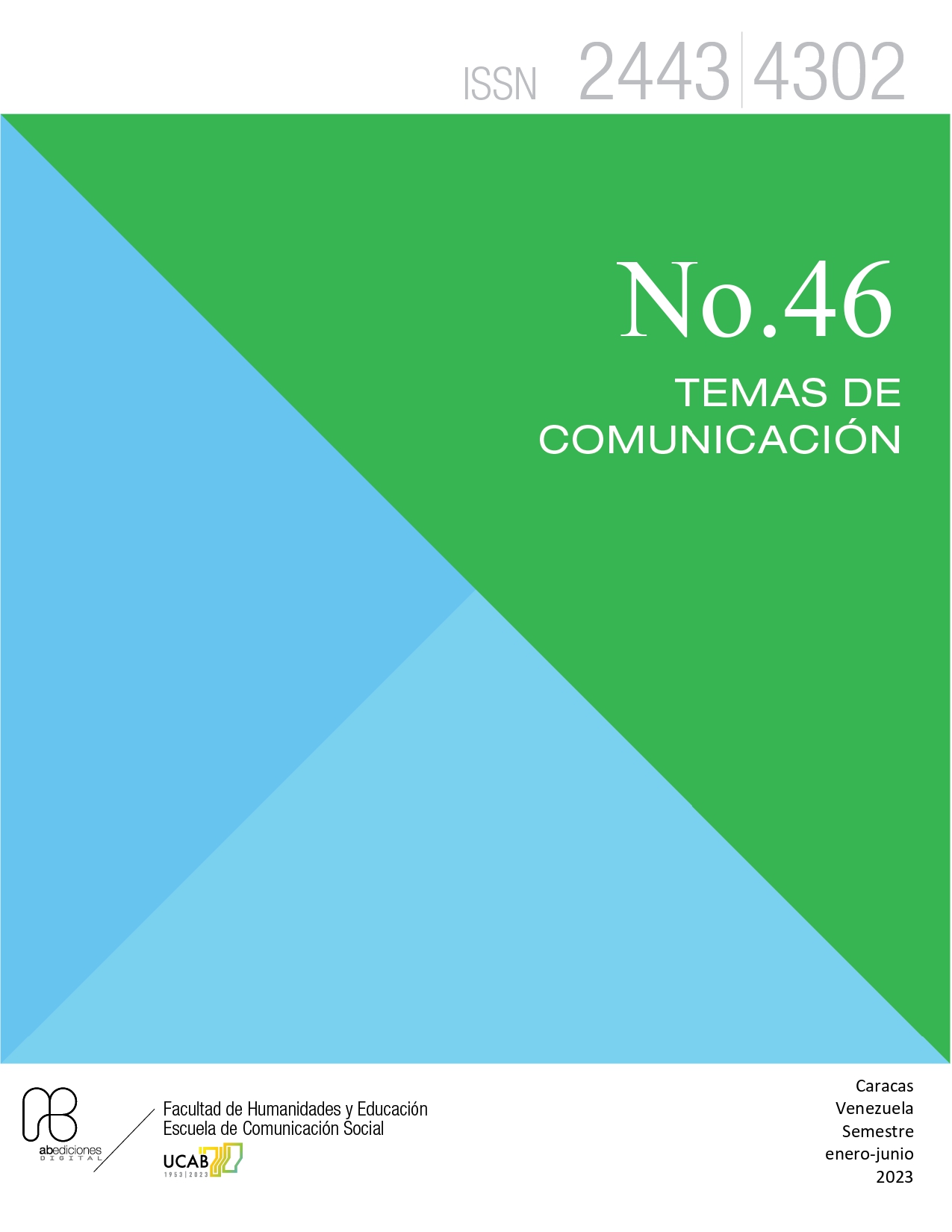How to make a discourse analysis? An approach for Social Communication students to the practice and its levels of research
DOI:
https://doi.org/10.62876/tc.vi46.6229Keywords:
discourse analysis, critical discourse analysisAbstract
The paper examines in a panoramic way what research and discourse analysis studies mean for Social Communication students. The field of discourse analysis is presented as a tool, technique and episteme for understanding and approaching social reality, its complexities of interaction and the dangers of manipulation, segregation and political control. The development of discourse analysis is associated to the field of communication studies and other disciplines of the Social and Humanistic Sciences. The student of Social Communication has in this reading a simple journey through the levels of research and study of discourse; focusing on the level of macrostructure, superstructure and persuasion the possibilities to carry out a rigorous research on social phenomena mediated by language and communication. In the last part of the article we close with an example of critical discourse analysis: I Have a Dream (1963) by Martin Luther King, Jr.. There we address the various levels of discourse analysis from the perspective of social, cognitive, historical, cultural and socio-spatial interaction.
Downloads
References
Austin, John Langshaw (1998). Cómo hacer cosas con palabras: palabras y acciones. Barcelona: Paidós.
Bajtín, Mijaíl (1998). Estética de la creación verbal. Siglo Veintiuno Editores. Tomado de: https://www.dgeip.edu.uy/IFS/documentos/2015/lengua/bibliografia/bajtin_generosdiscursivos.pdf
Bolívar, Adriana (2003). “Análisis del Discurso y compromiso social”, en: Akademos, 5 (1): 7-31.
Bolívar, Adriana (ed.) (2007). Análisis del discurso. Por qué y para qué. Caracas: Los Libros de El Nacional y Universidad Central de Venezuela.
Bolívar, Adriana (2015). “Crítica y construcción de teoría en el análisis de discurso latinoamericano”, en: : Denize Elena Garcia da Silva, María Laura Pardo (organizadoras). Pasado, presente y futuro de los Estudios de Discurso en América Latina. Brasilia: Universidade de Brasília, pp. 10-26.
Berger, Maurice (2018). “Un recuerdo de Martin Luther King Jr. a través de la lente”, en: New York Times. 28 de agosto. Tomado de: https://www.nytimes.com/es/2018/08/28/espanol/cultura/martin-luther-king-jr-imagenes.html
Beuchot, Maurico (1998). La retórica como pragmática y hermenéutica. Barcelona: Anthropos.
Calsamiglia Blancafort, Helena y Amparo Tusón Valls (1999). Las cosas del decir. Manual de análisis del discurso. Barcelona: Ariel Lingüística.
Centro de Recursos para la Escritura Académica (CREA) del Tecnológico de Monterrey (s/f). “Características de los géneros discursivos”. Tomado de:
http://sitios.ruv.itesm.mx/portales/crea/planear/como/caracteristicas_generos.htm
Centro Virtual Cervantes. “Análisis del discurso”. En: CVC. Diccionario de términos clave de ELE. Análisis del discurso. (cervantes.es) [03-01-2022]
Centro Virtual Cervantes. “Secuencia textual”. En: CVC. Diccionario de términos clave de ELE. Análisis del discurso. (cervantes.es) [03-01-2022]
Centro Virtual Cervantes. “Superestructura textual”. En: CVC. Diccionario de términos clave de ELE. Análisis del discurso. (cervantes.es) [03-01-2022]
Charaudeau, Patrick (2003). El discurso de la información: la construcción del espejo social. Barcelona: Gedisa.
Downloads
Published
How to Cite
Issue
Section
License
Copyright (c) 2023 Temas de Comunicación

This work is licensed under a Creative Commons Attribution-NonCommercial-ShareAlike 4.0 International License.


